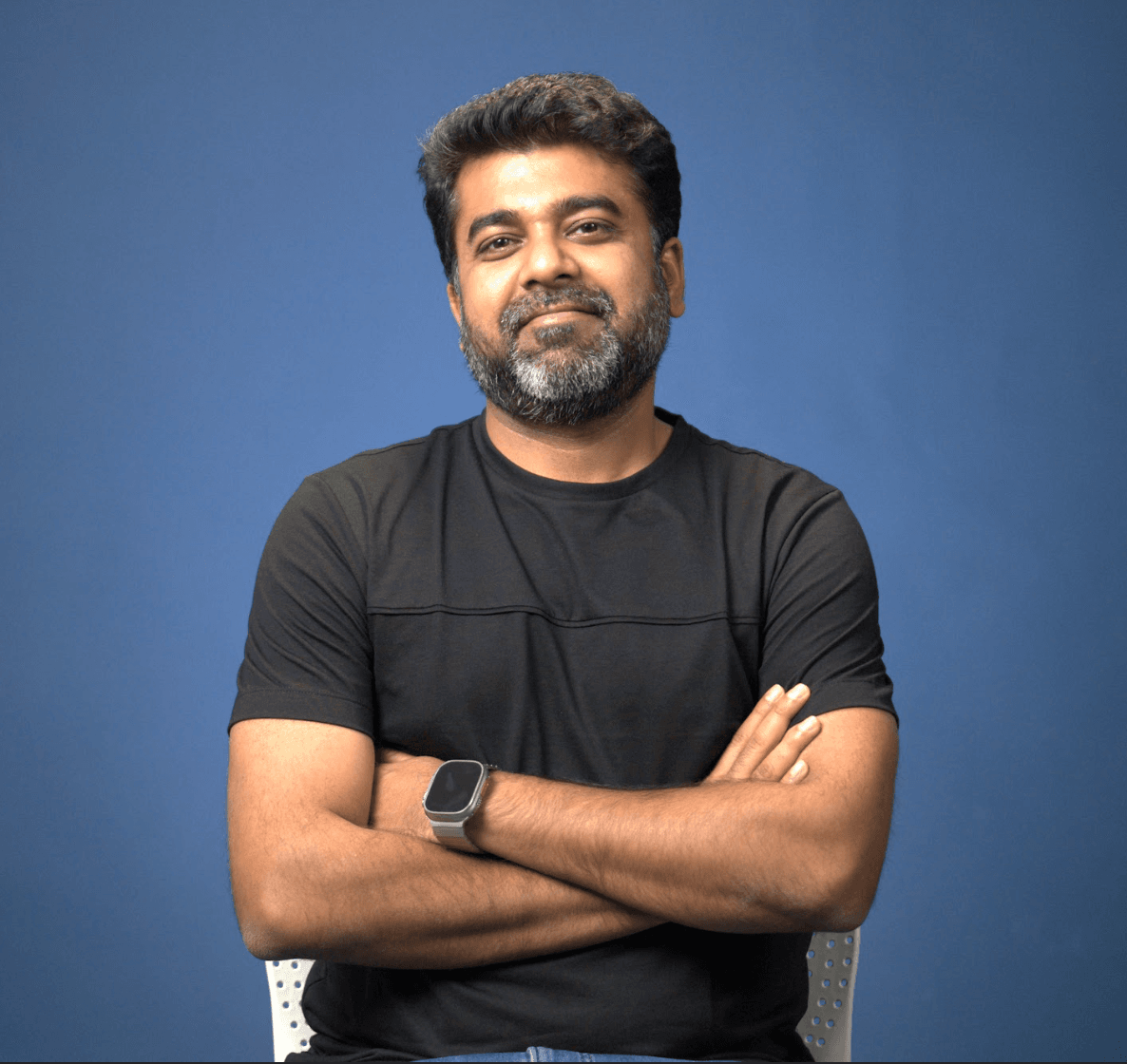Last week, I spoke with Ramesh, a 42 year old engineer from Dubai who asked me a question I hear almost daily: "Ankur, I have $200,000 saved up. Can I retire in India?"
My answer surprised him: "That depends. Are you planning to live in South Mumbai or Mysore?
Do you play golf three times a week or prefer morning walks?
Will you cook at home or eat out five times a week?"
The truth? There's no magic number for retirement.
Your lifestyle choice determines your corpus, not the other way around.
After helping hundreds of NRIs through Belong navigate their retirement planning, I've learned that the real question isn't "how much do I need?" but rather "what kind of life do I want to live, and how do I fund it without ever running out?"
This guide answers both questions.
We'll calculate the exact corpus you need based on your chosen city and lifestyle, show you how to build it using tax - efficient vehicles like GIFT City investments, and help you protect it from inflation and rupee depreciation. By the end, you'll have a clear retirement roadmap.
Quick answer: Most NRIs retiring in tier - 1 cities need ₹5 - 8 crore for a comfortable retirement lasting 25 - 30 years. Tier - 2 cities require ₹3 - 5 crore.
But these are just starting points. Read on to calculate your specific number.
Why Your Lifestyle Choice Comes Before Any Calculation
Here's what retirement calculators won't tell you: the difference between retiring in Bangalore and Coimbatore isn't just 30 - 40% in costs. It's an entirely different life.
In Bangalore, you'll pay ₹40,000 - 60,000 monthly rent for a 2BHK in a decent area. Healthcare is world - class, with multiple Apollo and Fortis hospitals nearby.
Your social circle will likely include other returning NRIs. International flights are easy. You'll find familiar cafes and restaurants that feel like Dubai.
In Coimbatore, ₹15,000 - 20,000 gets you a spacious 3BHK. Healthcare is good but limited for specialized treatments. Your neighbors will mostly be locals.
International travel means connecting through Bangalore or Chennai. Life is quieter, slower, more traditionally Indian.
Neither choice is better. They're different. Your retirement corpus must match your choice.
👉 Tip: Before calculating your retirement corpus, spend 2 - 3 months living in your target city. Rent an Airbnb, shop at local markets, visit hospitals, and track every rupee you spend. This reality check is worth more than any calculator.
The Real Cost of Living: City - Wise Breakdown for 2025
Based on data from Numbeo and my conversations with NRIs who've already made the move, here's what you can expect to spend monthly:
Mumbai (Most Expensive)
Basic Lifestyle (₹1.5 - 2 lakhs/month)
- Rent: 2BHK in suburbs like Andheri or Powai (₹50,000 - 70,000)
- Groceries: ₹20,000 - 25,000
- Utilities and maintenance: ₹8,000 - 12,000
- Transportation: ₹10,000 - 15,000
- Dining and entertainment: ₹20,000 - 30,000
- Household help: ₹12,000 - 15,000
- Miscellaneous: ₹20,000 - 30,000
Comfortable Lifestyle (₹2.5 - 3.5 lakhs/month)
- Premium 2/3BHK in Bandra, Juhu or Worli (₹1 - 1.5 lakhs)
- Organic groceries and imported items: ₹35,000 - 40,000
- Car maintenance and fuel: ₹15,000 - 20,000
- Regular dining at good restaurants: ₹40,000 - 50,000
- Gym, clubs, hobbies: ₹20,000 - 30,000
- Travel within India: ₹30,000 - 40,000
Source: Numbeo Cost of Living India 2025
Bangalore, Delhi, Pune (Tier - 1)
Basic Lifestyle (₹1.2 - 1.8 lakhs/month) Similar breakdown to Mumbai but 20 - 30% lower across most categories.
Comfortable Lifestyle (₹2 - 2.8 lakhs/month) You get more space and better quality of life for the same money compared to Mumbai.
Tier - 2 Cities (Jaipur, Kochi, Coimbatore, Indore)
Basic Lifestyle (₹60,000 - 90,000/month)
- Rent: 2BHK in good locality (₹15,000 - 25,000)
- Groceries: ₹12,000 - 18,000
- Utilities: ₹5,000 - 7,000
- Transportation: ₹8,000 - 12,000
- Entertainment: ₹10,000 - 15,000
- Household help: ₹8,000 - 10,000
Comfortable Lifestyle (₹1.2 - 1.8 lakhs/month) According to recent cost of living surveys, tier - 2 cities offer excellent quality of life at nearly half the cost of metros.
Comparison Table: Monthly Retirement Expenses by City
City Category | Basic Lifestyle | Comfortable Lifestyle | Luxury Lifestyle |
|---|---|---|---|
Mumbai | ₹1.5 - 2L | ₹2.5 - 3.5L | ₹4L+ |
Bangalore/Delhi/Pune | ₹1.2 - 1.8L | ₹2 - 2.8L | ₹3.5L+ |
Tier - 2 Cities | ₹60 - 90K | ₹1.2 - 1.8L | ₹2.5L+ |
Many NRIs find that ₹2 lakhs per month provides a very comfortable lifestyle in most Indian cities. But "comfortable" means different things to different people.
Healthcare: The Elephant in the Room That Eats Your Corpus
Here's a harsh truth: your healthcare costs will likely double every 7 - 10 years after you turn 60.
At 60, you might spend ₹50,000 annually on health insurance and routine care.
By 70, that becomes ₹1.5 - 2 lakhs. By 80, you're looking at ₹3 - 5 lakhs even if you're healthy, and significantly more if you develop chronic conditions.
Real numbers from 2025:
- Health insurance for a 60 - year - old couple: ₹1 - 1.5 lakhs annually
- Same couple at age 70: ₹2.5 - 4 lakhs annually
- ICU stay in a good hospital: ₹1.5 - 2 lakhs per day
- Cardiac bypass surgery: ₹3 - 5 lakhs
- Hip replacement: ₹2 - 4 lakhs
- Cancer treatment: ₹5 - 15 lakhs
HDFC Life's NRI health insurance data shows that healthcare costs in India, while cheaper than the UAE, are rising at 10 - 12% annually.
👉 Tip: Buy health insurance in India 2 - 3 years before you plan to move back. Most policies have 2 - 4 year waiting periods for pre - existing conditions. Starting early means you're covered from day one of retirement.
Here's what many NRIs miss: the UAE provides excellent healthcare through employer insurance. Once you retire and move to India, you're on your own. The transition shock can be expensive.
Smart retirees set aside ₹30 - 50 lakhs (in today's value) specifically for healthcare emergencies. This is separate from your health insurance and monthly medical expenses.
Consider this: if you need ₹2 lakhs per month for lifestyle expenses, you should budget an additional ₹50,000 - 1 lakh per month for health - related costs after adjusting for inflation. That's ₹2.5 - 3 lakhs total monthly requirement.
Hidden Costs Nobody Tells You About
When I help NRIs calculate their retirement corpus, they almost always miss these expenses:
Moving Costs from UAE to India:
- Shipping household goods: $3,000 - 8,000 (₹2.5 - 6.5 lakhs)
- Flight tickets for family: ₹2 - 4 lakhs
- Temporary accommodation while settling: ₹50,000 - 1 lakh
- Initial furniture and appliances: ₹3 - 5 lakhs
- Total: ₹8 - 16 lakhs upfront
The Reverse Culture Shock Tax: You'll spend more in your first year than planned. Why? Everything feels different.
You'll eat out more while figuring out cooking again. You'll hire help for tasks you used to do yourself. You'll take more cabs until you're comfortable driving in Indian traffic. Budget an extra 30 - 40% for year one.
Property Costs: Even if you own a home in India, it needs renovation after years of being empty or rented. Budget ₹10 - 20 lakhs for painting, repairs, new fittings, and making it "your home" again.
Weddings, Family Obligations: Indian society expects retired people to contribute to family weddings, festivals, and emergencies. NRIs returning home often find themselves sponsoring nieces' weddings or helping siblings with medical bills. Budget ₹5 - 10 lakhs annually for "family expenses."
Loss of Earning Potential: In the UAE, you might have picked up consulting work or part - time assignments. In India, especially if you've been away for 15 - 20 years, rebuilding that network takes time.
Don't count on earning much in your first 2 - 3 years.
According to NRI tax experts, many returning NRIs underestimate initial settlement costs by 40 - 50%.
Tax Implications: What the Government Takes
Here's where your residential status matters enormously.
When you move back to India, you typically become a Resident but Not Ordinarily Resident (RNOR) for the first few years. This status has tax advantages. After that, you become a full Resident.
As a Resident Indian:
- Interest from NRE Fixed Deposits is tax - free
- Interest from NRO FDs is taxable at your slab rate
- Interest from Indian Fixed Deposits is taxable
- Rental income is taxable (after standard deduction)
- Capital gains from equity/mutual funds follow standard rules
- Global income becomes taxable
But here's the silver lining: GIFT City investments offer completely tax - free returns for individuals. If you invest in GIFT City Fixed Deposits or AIFs while you're an NRI, those returns remain tax - free even after you become a resident.
Example: Tax impact on ₹1 crore corpus
Investment Type | Annual Return | Tax (30% bracket) | Post - tax Return |
|---|---|---|---|
Regular FD (7%) | ₹7 lakhs | ₹2.1 lakhs | ₹4.9 lakhs |
NRE FD (6.5%) | ₹6.5 lakhs | ₹0 | ₹6.5 lakhs |
GIFT City USD FD (5%)* | $60,000 (₹50 lakhs) | ₹0 | ₹50 lakhs |
*Assuming 5% USD return + no rupee depreciation
👉 Tip: Before moving back, restructure your investments to maximize tax - free income. Convert regular savings to NRE deposits, move a portion to GIFT City, and consider tax - free bonds.
Use Belong's Compliance Compass to ensure you're following all rules.
The India - UAE DTAA (Double Taxation Avoidance Agreement) helps, but proper planning before your return can save you lakhs annually in taxes.
The Actual Corpus Calculation: A Step - by - Step Approach
Now for the math. Don't worry, I'll keep it simple.
Step 1: Determine Your Monthly Expenses in Today's Terms
Let's say you want ₹2 lakhs per month lifestyle (comfortable in most tier - 1 cities). Annual expense: ₹24 lakhs
Step 2: Adjust for Inflation to Retirement Date
If you're retiring in 10 years, with 6% inflation: Future monthly need = ₹2 lakhs × 1.06^10 = ₹3.58 lakhs Annual need at retirement = ₹43 lakhs
Step 3: Calculate Total Corpus Using the 30X Rule
The industry standard suggests having 30 times your annual expenses: ₹43 lakhs × 30 = ₹12.9 crore
Wait, that seems huge! But remember, this assumes:
- 25 - 30 years of retirement (age 60 to 85 - 90)
- 6% inflation continuing throughout
- 8 - 9% returns on invested corpus
- No other income sources
Step 4: Adjust for Your Specific Situation
Reduce corpus needed if:
- You own a home (reduce by ₹30 - 50 lakhs in monthly housing costs)
- You have rental income (reduce proportionally)
- You'll receive pension or social security
- Your spouse works or has separate income
Increase corpus needed if:
- You have health conditions
- You want international travel annually
- You'll support children/grandchildren
- You live in Mumbai or prime locations
Real Example: Suresh & Meena's Retirement Plan
Suresh (45) and Meena (43) live in Dubai. They want to retire in Bangalore at 60.
Current lifestyle equivalent in Bangalore: ₹2.5 lakhs/month Years to retirement: 15
Inflation - adjusted monthly need at 60: ₹2.5L × 1.06^15 = ₹6 lakhs Annual need: ₹72 lakhs
Using 30X rule: ₹72L × 30 = ₹21.6 crore
Adjustments:
- They own a home in Bangalore ( - ₹1.5 crore)
- Suresh will get ₹30,000/month pension ( - ₹1 crore)
- They're healthy and active ( - ₹0.5 crore cushion)
Adjusted corpus needed: ₹18.6 crore
Seems impossible? It's not. They have 15 years to build it. At 12% annual returns (achievable through equity investments), they need to invest: ₹45,000 per month to reach ₹18.6 crore
They currently save $3,000/month in UAE. By redirecting this to India's best NRI investment options, they're on track.
👉 Tip: Use Belong's FD Rate Comparison Tool and GIFT City AIF Explorer to maximize your retirement corpus growth. Even a 1 - 2% higher return makes a massive difference over 15 - 20 years.
Investment Strategy: Building Your Corpus from UAE
You're in the UAE now, earning in dollars, planning to retire in India with rupees. Here's how to build your corpus intelligently.
The 60 - 30 - 10 Rule for Retirement Planning (10 - 15 years to retirement):
60% - Growth Assets (Equity exposure)
- Indian equity mutual funds through NRE accounts
- Best NRI mutual funds with proven track records
- Direct stocks if you're knowledgeable
- Target: 12 - 15% annual returns
30% - Stable Income (Debt and Fixed Income)
- GIFT City USD Fixed Deposits (5 - 6% in USD, tax - free)
- Best NRE FD rates (6 - 7%, tax - free)
- High - quality debt mutual funds (7 - 8%)
- Target: 6 - 8% annual returns
10% - Currency Hedge (USD - denominated)
- Keep some savings in USD/AED
- GIFT City investments naturally provide this
- US stocks or international mutual funds
- Target: Rupee depreciation protection
As you get closer to retirement (5 years away), shift to 40 - 40 - 20 (equity - debt - USD).
At retirement, move to 20 - 60 - 20 (minimal equity, maximum stable income).
Real Returns After Inflation:
If you earn 12% on your corpus but inflation is 6%, your real return is only 6%. This is why you need a larger corpus than you think.
Example Portfolio for ₹1 Crore Today (Age 45, Retiring at 60):
- ₹60 lakhs in equity mutual funds (SIPs)
- ₹25 lakhs in GIFT City FDs
- ₹10 lakhs in NRE FDs
- ₹5 lakhs emergency fund in liquid funds
This balanced approach historically generates 10 - 11% returns with moderate risk.
Belong helps you implement this through our GIFT City investment platform, where you can open USD FDs, explore AIFs, and track your entire retirement portfolio in one place.
Protecting Against Inflation and Rupee Depreciation
You've built a ₹10 crore corpus. Congratulations! But here's the scary part: at 6% inflation, your ₹10 crore will have the purchasing power of ₹5.5 crore in just 12 years.
Inflation Protection Strategies:
1. Keep a Portion in Equity Even After Retirement Don't go 100% fixed income at retirement. Keep 20 - 30% in equity mutual funds to beat inflation long - term.
2. Invest in GIFT City USD Assets GIFT City allows you to hold dollars while living in India. If the rupee depreciates from ₹83 to ₹95 over 10 years, your USD corpus automatically gains 14.5% in rupee terms.
3. Ladder Your Fixed Deposits Instead of putting ₹50 lakhs in a single 5 - year FD, create a laddering strategy:
- ₹10 lakhs maturing each year
- Allows you to reinvest at higher rates when rates rise
- Provides liquidity without breaking FDs
4. Have 30 - 40% of Corpus in Repatriable Investments Use NRE accounts and GIFT City investments. If India's economy struggles or rupee crashes, you can move money abroad quickly.
Historical Rupee Depreciation: The rupee has depreciated roughly 3 - 4% annually against the USD over the past 20 years. Track current trends using Belong's Rupee vs Dollar tracker.
If you retire with ₹10 crore all in rupees, and the rupee depreciates 4% annually, you're effectively losing ₹40 lakhs in purchasing power in year one alone (if you were comparing to your UAE - earned dollars).
👉 Tip: Aim to have 30 - 40% of your retirement corpus in USD or USD - linked assets. GIFT City makes this easy and legal for Indian residents. You get tax benefits and currency protection in one investment.
When to Start (The Answer Is Always: Yesterday)
The difference between starting retirement planning at 35 vs 45 is staggering.
Example: Building ₹5 crore by age 60
Starting at age 35 (25 years):
- Monthly investment needed: ₹28,000
- Total invested: ₹84 lakhs
- Growth from returns: ₹4.16 crore
- Final corpus: ₹5 crore (at 12% annual return)
Starting at age 45 (15 years):
- Monthly investment needed: ₹78,000
- Total invested: ₹1.4 crore
- Growth from returns: ₹3.6 crore
- Final corpus: ₹5 crore (at 12% annual return)
By waiting 10 years, you need to invest 2.8X more each month.
But what if you're 50 and just starting?
Don't panic. You have options:
- Increase your savings rate dramatically - Cut lifestyle costs in UAE, save 60 - 70% of income
- Delay retirement by 5 years - Work until 65 instead of 60
- Choose a tier - 2 city - Reduces corpus needed by 40 - 50%
- Plan to work part - time in India - Advisory roles, consulting work
- Consider a hybrid model - Spend summers in India, winters in a cheaper country
I've seen NRIs successfully build ₹3 - 4 crore corpus in just 10 years by combining high savings rates (50 - 60% of income) with aggressive equity investments and smart tax planning under DTAA.
Use Belong's Residential Status Calculator to understand your tax obligations and optimize accordingly.
What If You Run Out of Money?
Let's talk about the fear nobody wants to discuss: outliving your money.
You retire at 60 with ₹5 crore. You're 82, and the corpus is down to ₹20 lakhs. Healthcare costs are rising. What do you do?
Safety Nets to Build Now:
1. Reverse Mortgage on Your Home If you own property, banks will pay you monthly rent while you continue living there. You get income, keep your home, and the bank recovers from property sale after your death.
2. Annuity Portion Keep ₹50 lakhs - ₹1 crore in immediate annuities that pay guaranteed monthly income for life. Yes, returns are lower (6 - 7%), but you can never outlive them.
3. Children's Support Plan Have an honest conversation with your children. Many adult children in the UAE/US would happily send ₹50,000 - 1 lakh monthly if needed.
4. Downsize If you're in a large home, sell it and move to a smaller apartment. The proceeds can fund 5 - 10 more years.
5. Tier - 2 Pivot If money runs tight in Bangalore, moving to Mysore or Coimbatore can cut your expenses by 40%. Your ₹20 lakh corpus lasts much longer.
The 4% Safe Withdrawal Rule:
Financial planners globally recommend withdrawing no more than 4% of your corpus annually (adjusted for inflation). This historically allows your money to last 30+ years.
For a ₹5 crore corpus:
- Year 1 withdrawal: ₹20 lakhs (4%)
- Year 2: ₹21.2 lakhs (adjusted for 6% inflation)
- Year 3: ₹22.5 lakhs
- And so on…
Your remaining ₹4.8 crore continues to grow at 8 - 10%, partially offsetting withdrawals.
Red Flags You're Overspending:
- Withdrawing more than 5% annually
- Corpus declining despite market being up
- Dipping into emergency fund frequently
- Borrowing from children
Monitor your withdrawal rate annually. If it creeps above 5%, make immediate lifestyle adjustments.
Your Retirement Readiness Checklist
Use this 3 years before your planned retirement:
Financial:
- [ ] Calculated exact corpus needed for your chosen city
- [ ] Built 80%+ of target corpus
- [ ] Diversified across equity, debt, and USD assets
- [ ] Set up NRE accounts if not already done
- [ ] Invested in GIFT City for tax - free returns
- [ ] Reviewed and optimized tax structure under DTAA
- [ ] Created will and estate plan
- [ ] Bought health insurance with 2 - 4 year head start
Practical:
- [ ] Finalized city/neighborhood to retire in
- [ ] Secured housing (bought or identified rental)
- [ ] Built local social network (visit 2 - 3 times/year)
- [ ] Identified healthcare providers and hospitals
- [ ] Planned first - year budget with 40% buffer
- [ ] Set up power of attorney and legal documents
- [ ] Informed family of retirement plans
Emotional:
- [ ] Spent 3 - 6 months living in target city
- [ ] Identified hobbies and daily routine
- [ ] Built friend circle beyond ex - work colleagues
- [ ] Discussed expectations with spouse
- [ ] Planned travel and leisure activities
- [ ] Created purpose beyond work (volunteering, teaching, mentoring)
👉 Tip: Join Belong's WhatsApp community to connect with NRIs who've already made the transition. Real experiences beat any article. Join here.
The Bottom Line
Can you retire comfortably in India as an NRI from UAE? Absolutely. But "comfortable" is personal, and the corpus varies wildly based on your choices.
Quick Summary:
- Tier - 1 cities: ₹5 - 8 crore for comfortable retirement
- Tier - 2 cities: ₹3 - 5 crore
- Adjust upward if you want luxury, downward if you own a home
- Always add ₹30 - 50 lakhs medical emergency buffer
- Start planning now, not 2 years before retirement
- Invest smart: 60% equity, 30% debt, 10% USD while building corpus
- Use tax - advantaged accounts: NRE, GIFT City
- Protect against rupee depreciation and inflation
The NRIs who retire successfully don't just save money. They save strategically. They understand tax implications, leverage DTAA benefits, use GIFT City's advantages, and build diversified portfolios.
That's exactly what we help you do at Belong.
Whether you're 35 and just starting to think about retirement, or 55 and worried you're behind, we've built tools specifically for your situation.
Our FD rate comparison tool helps you find the best returns. Our GIFT City investment platform gives you access to tax - free USD deposits. Our community of financial experts and fellow NRIs provides the support you need.
Retirement planning isn't sexy. It's not exciting like investing in the next big stock. But it's the difference between spending your 70s worried about money and spending them exactly how you want.
Start today. Even if you can only save ₹10,000/month right now, that's infinitely better than ₹0. The compounding over 20 - 25 years will surprise you.
Ready to take control of your retirement?
Download the Belong app and open your first GIFT City USD Fixed Deposit today. Tax - free returns + rupee protection + full repatriation.
Have questions? Join our WhatsApp community where I and my team personally answer queries from NRIs planning their retirement.
Join Belong's WhatsApp Community
Your future self will thank you.
Sources:




